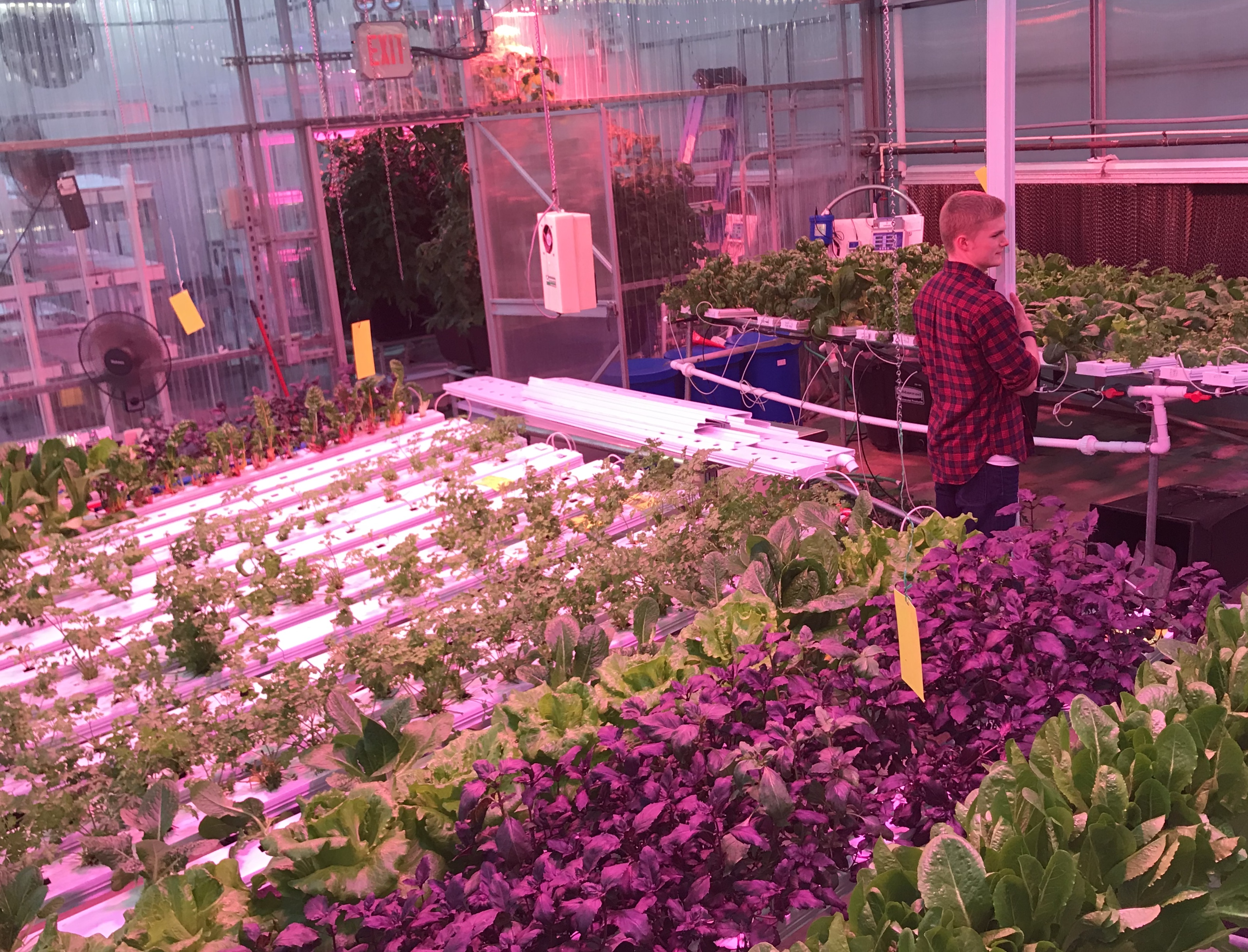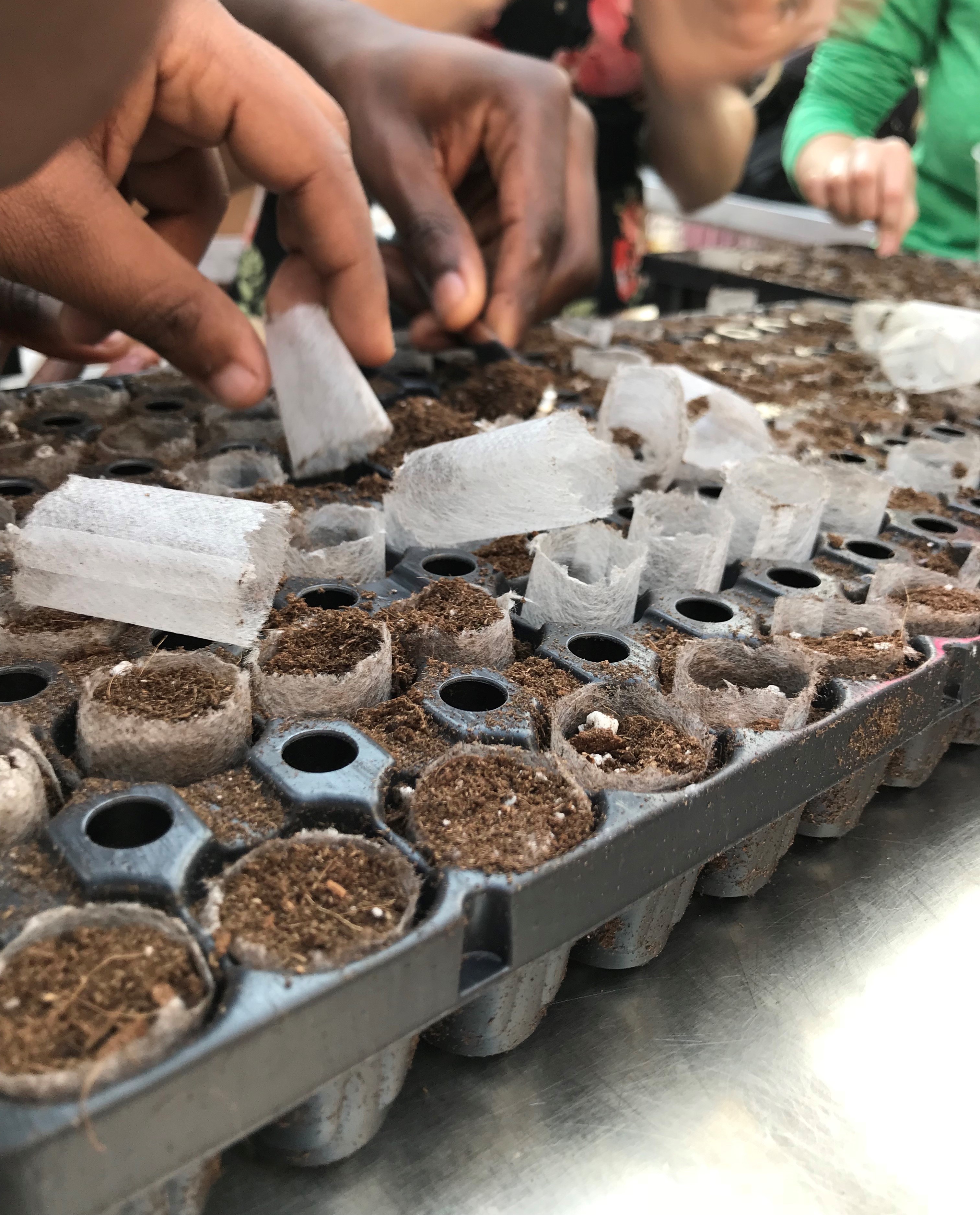THE PRESIDENTS PARK HYDROPONIC GREENHOUSE GROWS FRESH PRODUCE FOR MASON DINING
By Claire Underwood, Staff Writer
Since 2013, Mason has grown lettuce, basil, cilantro and other microgreens in its campus greenhouse using a hydroponic growing system. Ike’s dining hall uses much of the greens grown on campus to feed students.
The hydroponic greenhouse is located in President’s Park, an area dedicated to freshmen dorms. In 2013, the College of Science stopped using the building and it was soon taken over by the Office of Sustainability to use for food production. In 2014, they hired Doni Nolan, a Mason alum who graduated earlier that same year with a degree in biology. As the supervisor of the greenhouse, Nolan has since completely redeveloped the way that the greenhouse functions.
“The outdoor soil environment created a concern for food safety,” Nolan said, inspiring the development of a new hydroponic growing system.
Hydroponics is an agricultural technique that uses water to deliver a solution of nutrients and minerals to a plant’s roots directly, without the use of soil.
“Using indoor greenhouses and hydroponics for growing food make it more safe and sanitary than outdoors,” she explained. “The food is protected from animals and vandalism, plus the hydroponic methods allow us to grow food without soil. These factors prevent the spread of foodborne illness.”
Since Nolan took charge, the impact of the greenhouse has been increasing on campus. Nolan explained that there are over 100 students who volunteer in the greenhouse each semester.
“Doni has so much knowledge,” said Christina Famodu, an Environmental and Sustainability Studies major. “There is a lot of trial and error with the development of infrastructure in the greenhouse and what I admire most about her is her willingness to try new ideas.”
Students volunteering for class or internship credit do much of the work done in the greenhouse. Because of this, they need access to a place to work during all seasons of the year. Working inside of the greenhouse allows students to work year-round, and having a building to grow food inside of offers protection from both animals and the elements to ensure that food is produced at all times.
Once the produce is harvested from the greenhouse, it is collected and sold to Sodexo for use at the salad bar in Ike’s dining hall. According to Mason’s Office of Sustainability, the Presidents Park greenhouse “now produces approximately 2,000 lbs. of fresh produce annually, which raises $20,000 each year that is used to pay for supplies, staff and utilities.”
While being economical for Mason, the greenhouse is an opportunity for students to learn about sustainable business practices and the sources of their food. And it’s not just an opportunity for students majoring in environment and sustainability-related subjects.
“Working in the greenhouse helped me gain a green thumb, and it is also beneficial to help students become more aware of the environment around them,” said Ashlynn Hubert, an integrative studies major with a concentration in legal studies. Hubert first volunteered in the greenhouse for a class assignment.
The Mason greenhouse continues to grow and improve with every semester. They are expanding to grow even more produce, including tomatoes, thyme and mint. Volunteers are welcome to work on a walk-in basis from 4 to 7 p.m. on Mondays, Wednesdays and Fridays, or Tuesdays from 11 a.m. to 2 p.m.
Photos Courtesy of Jimmy O’hara





